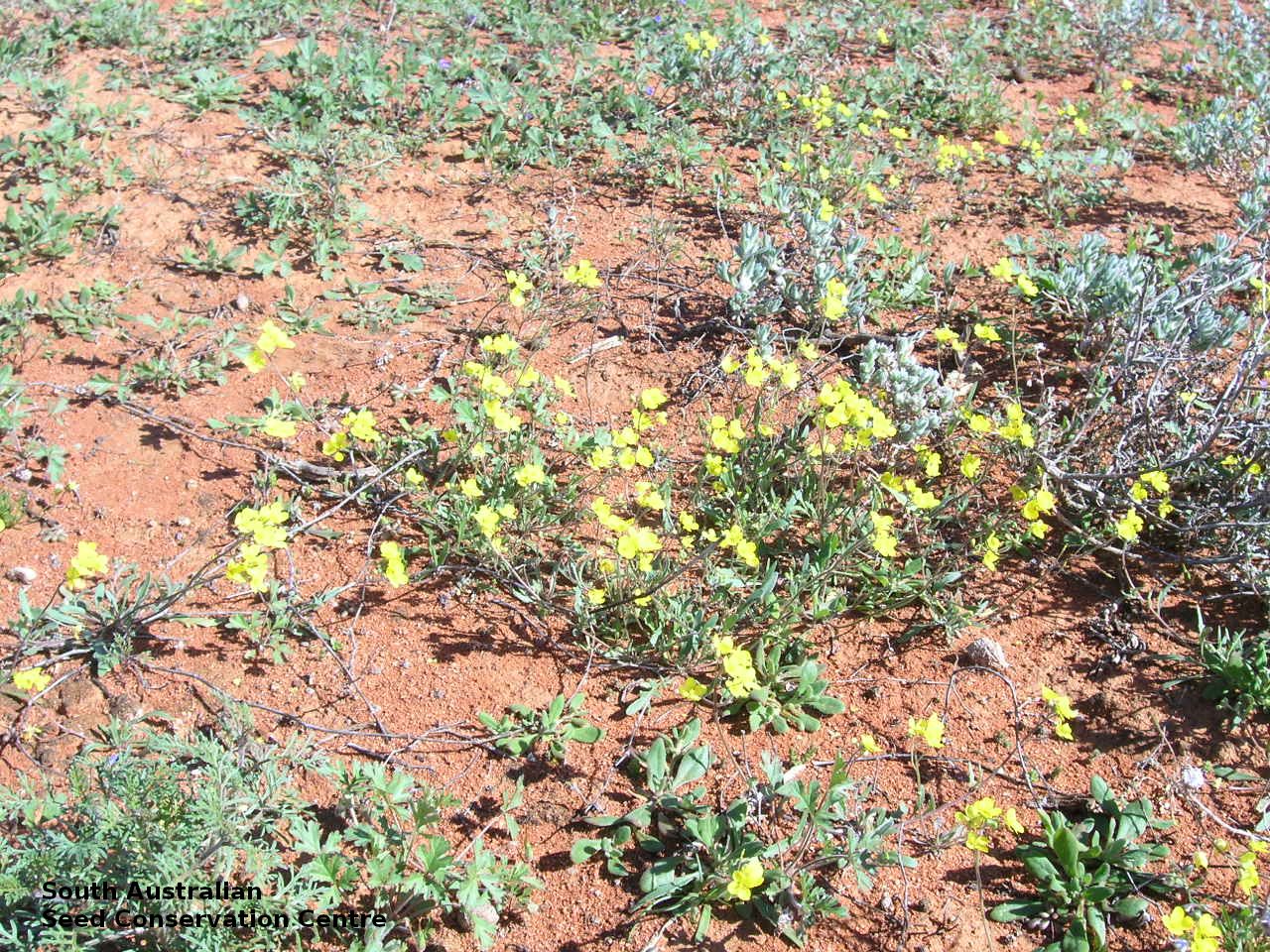
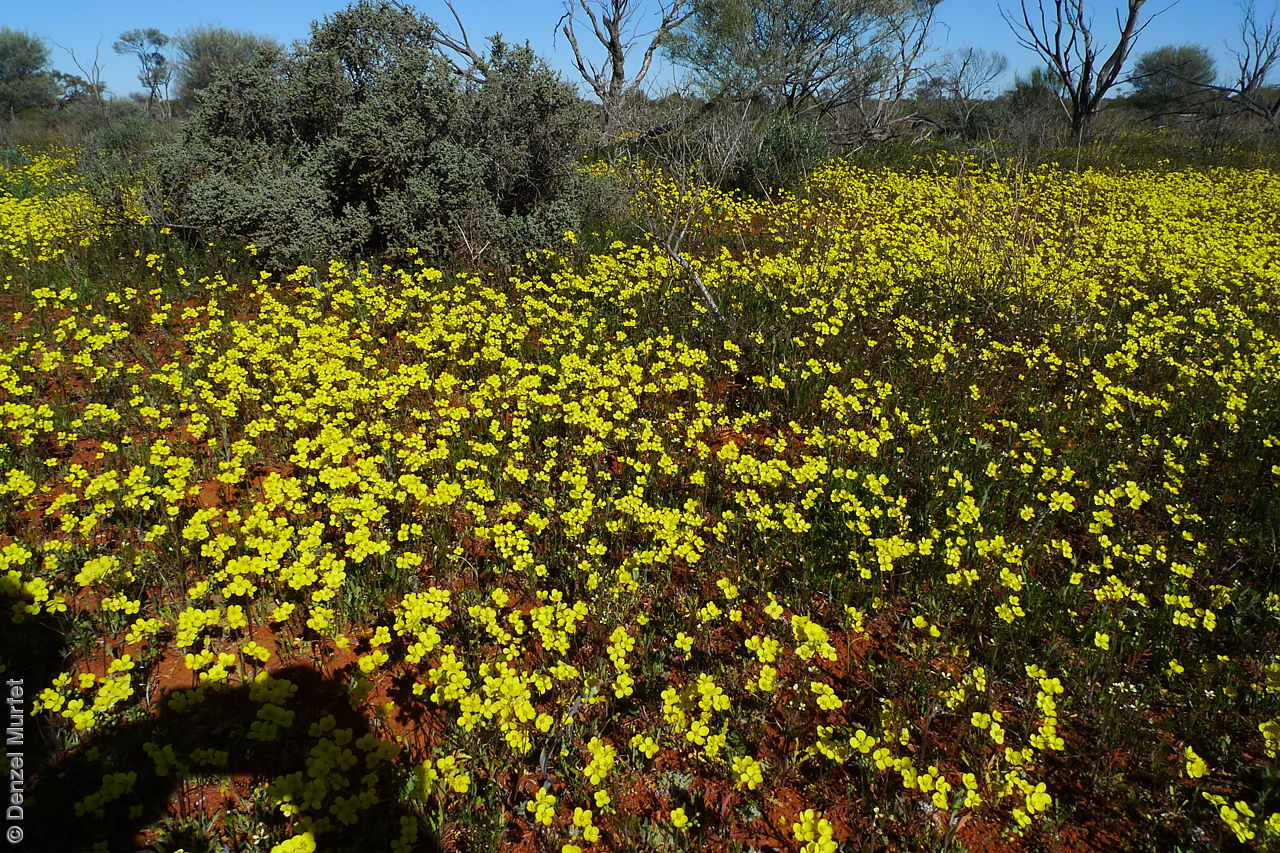
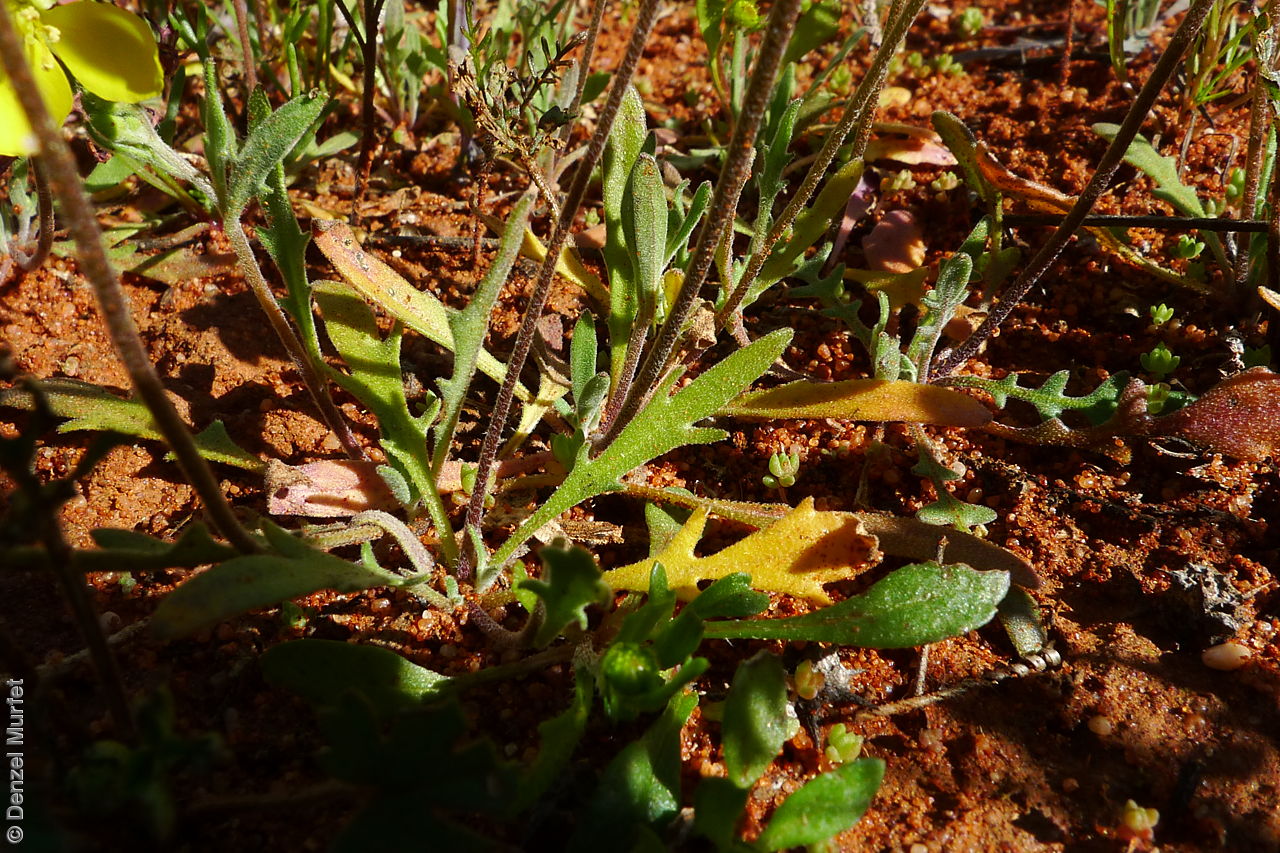
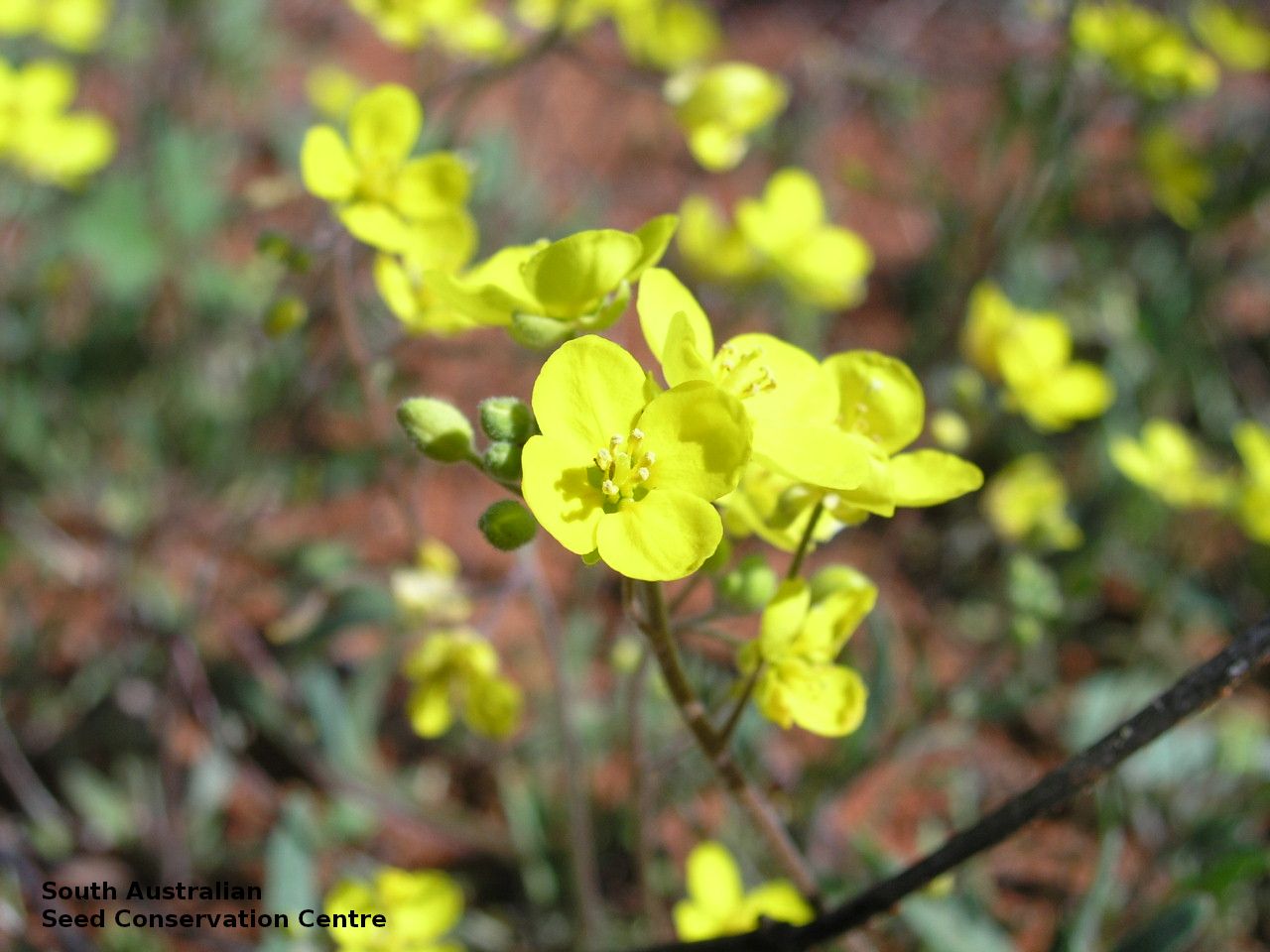
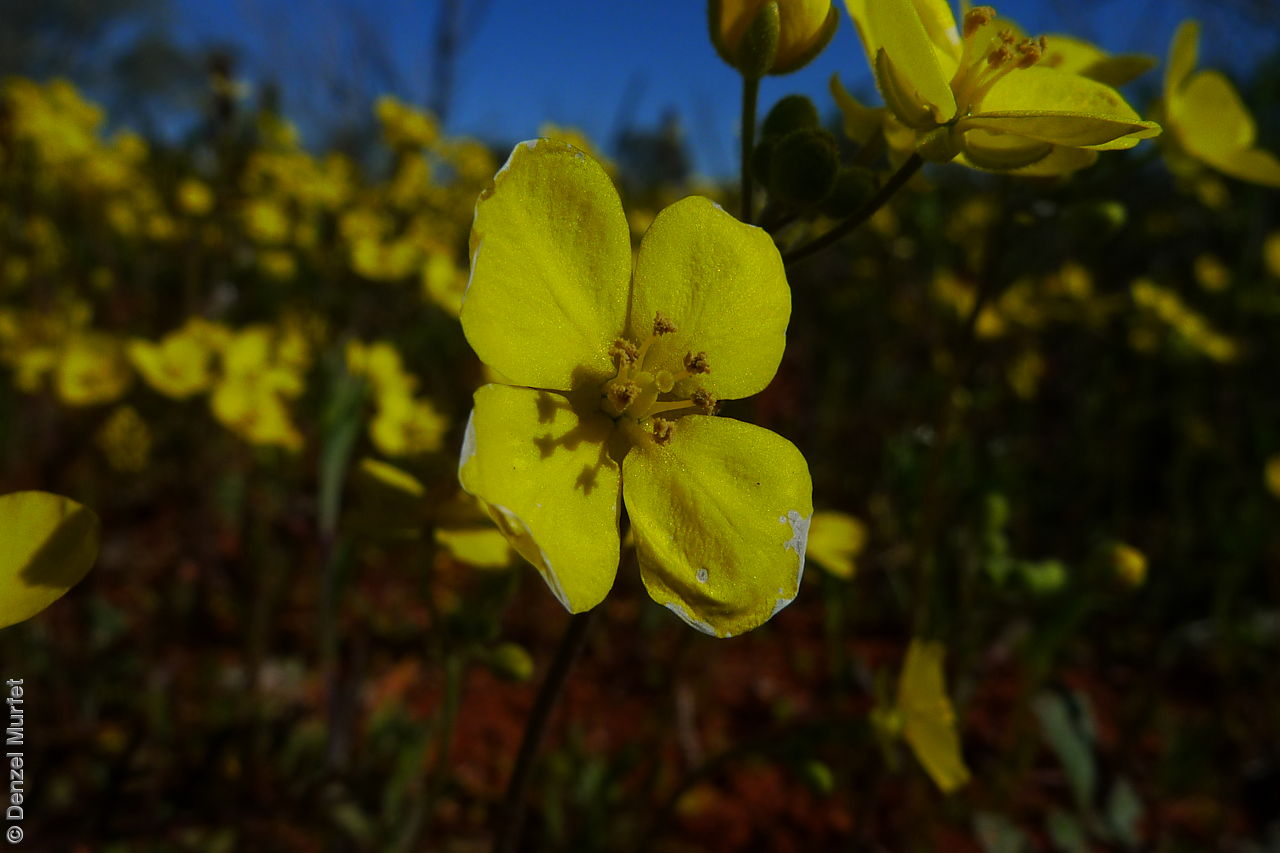
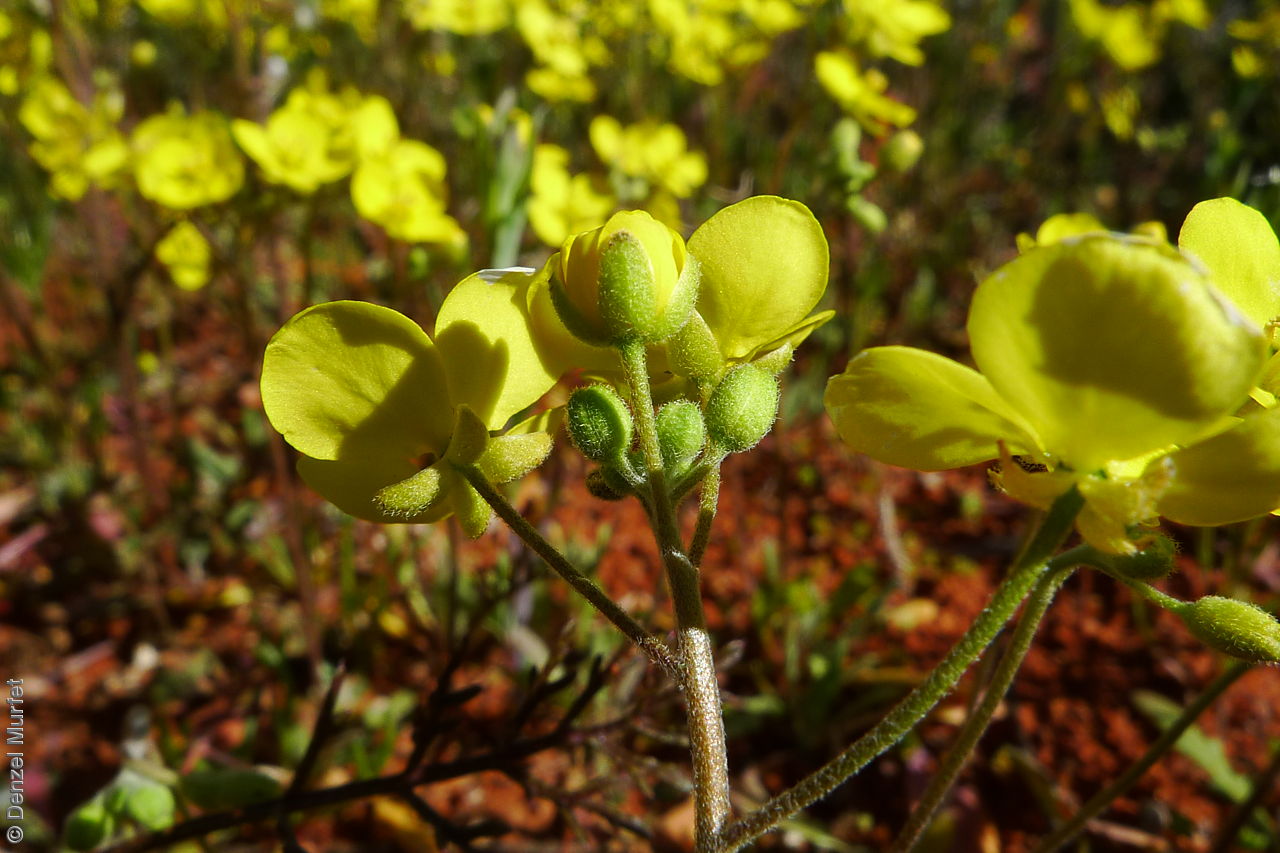
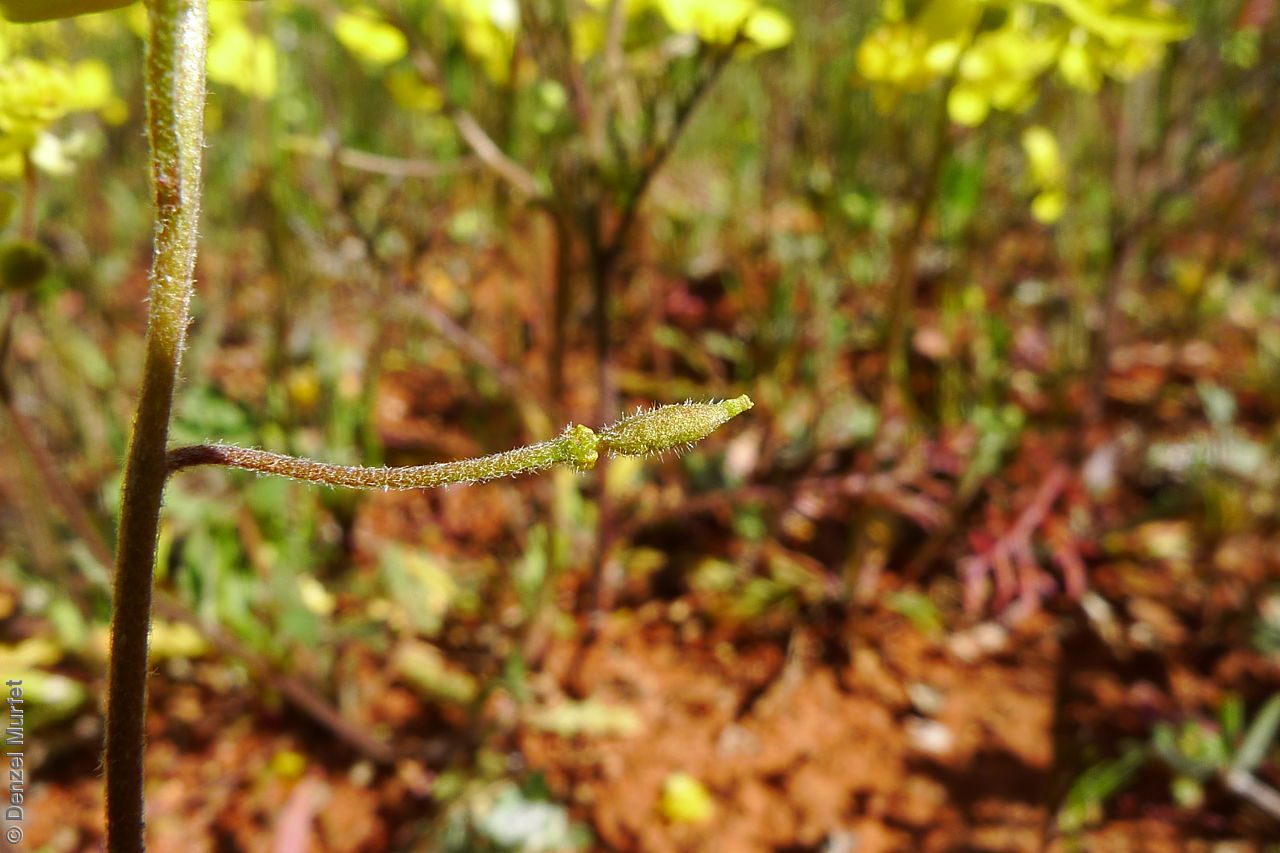
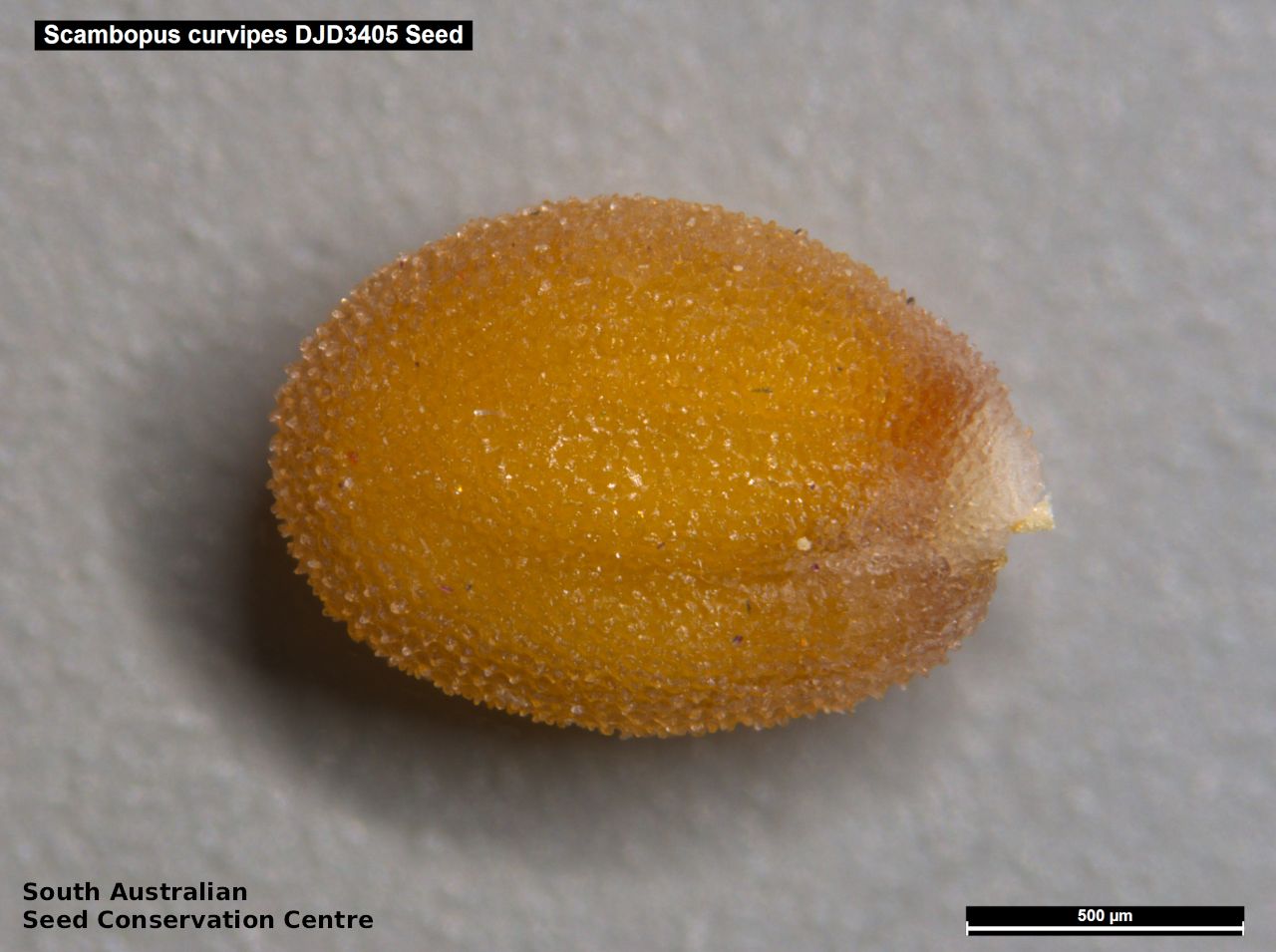
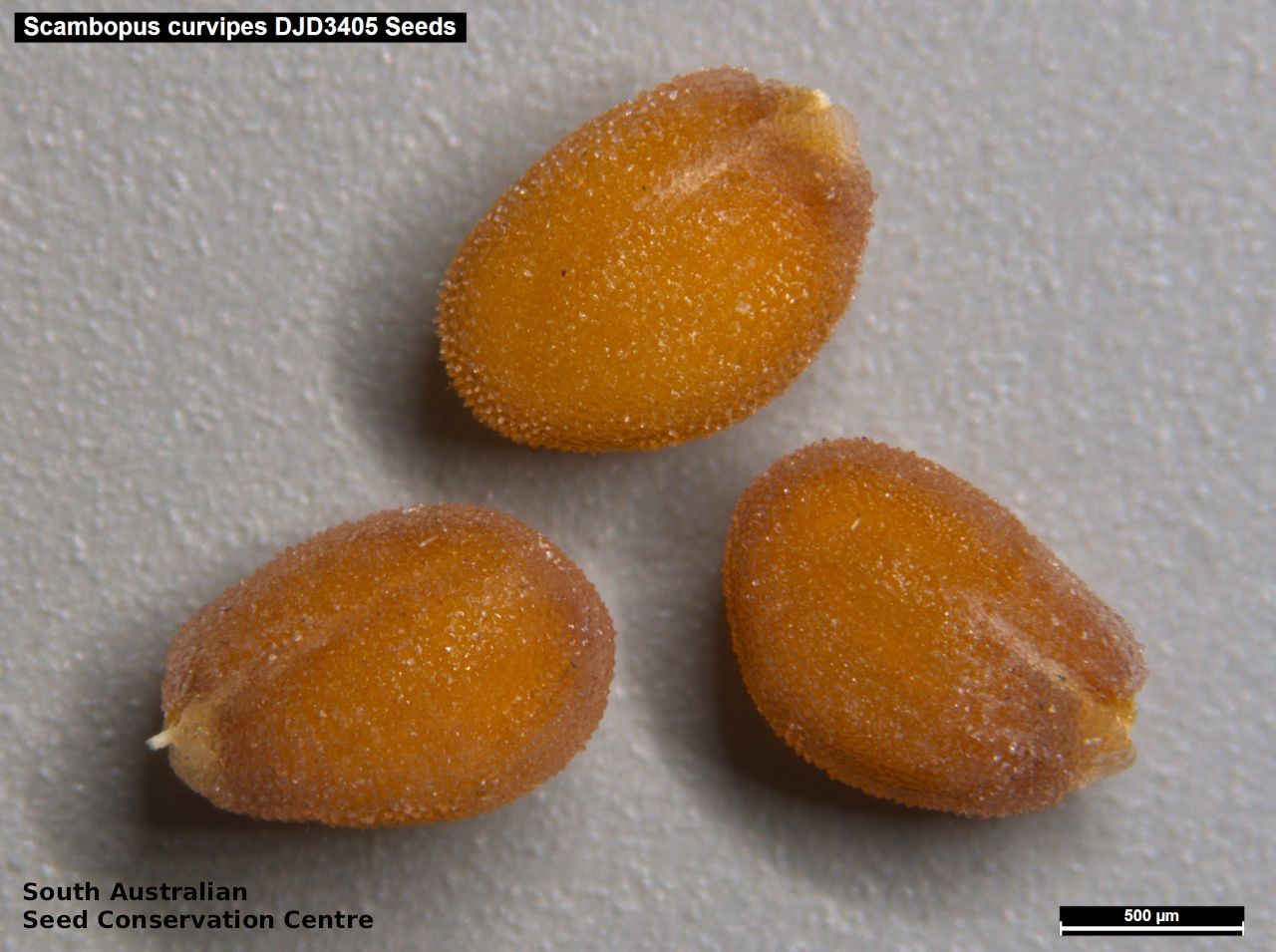

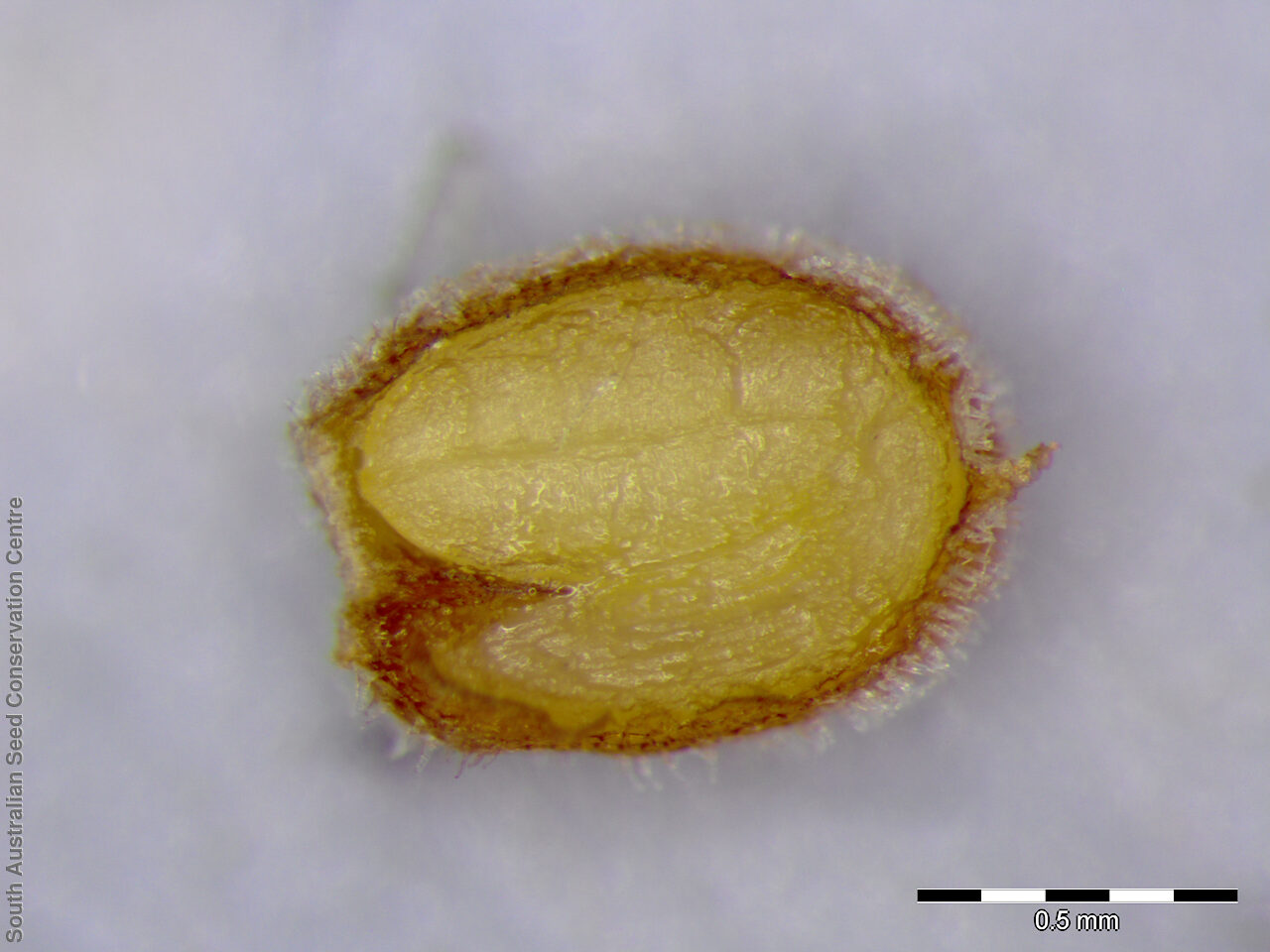
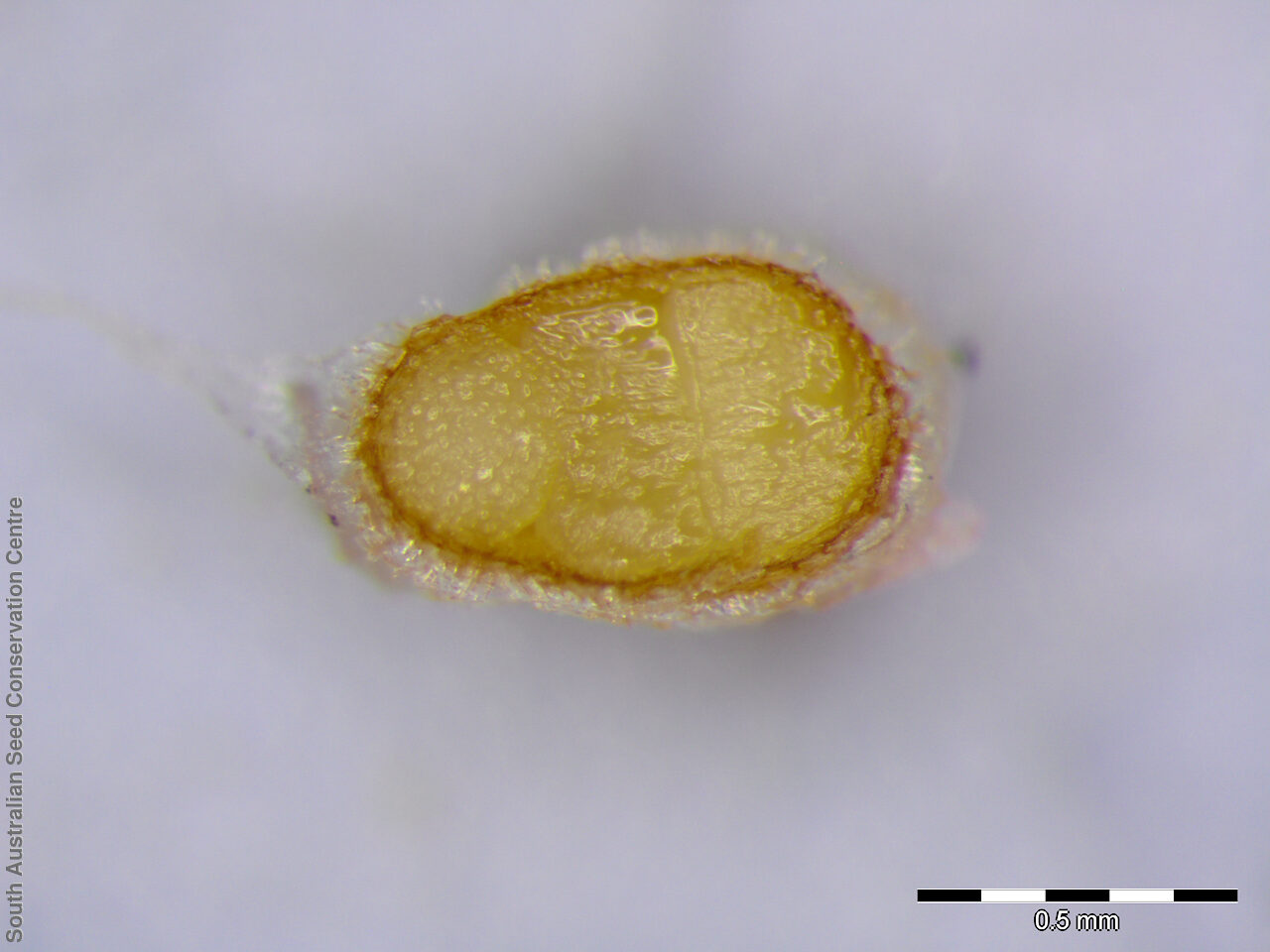

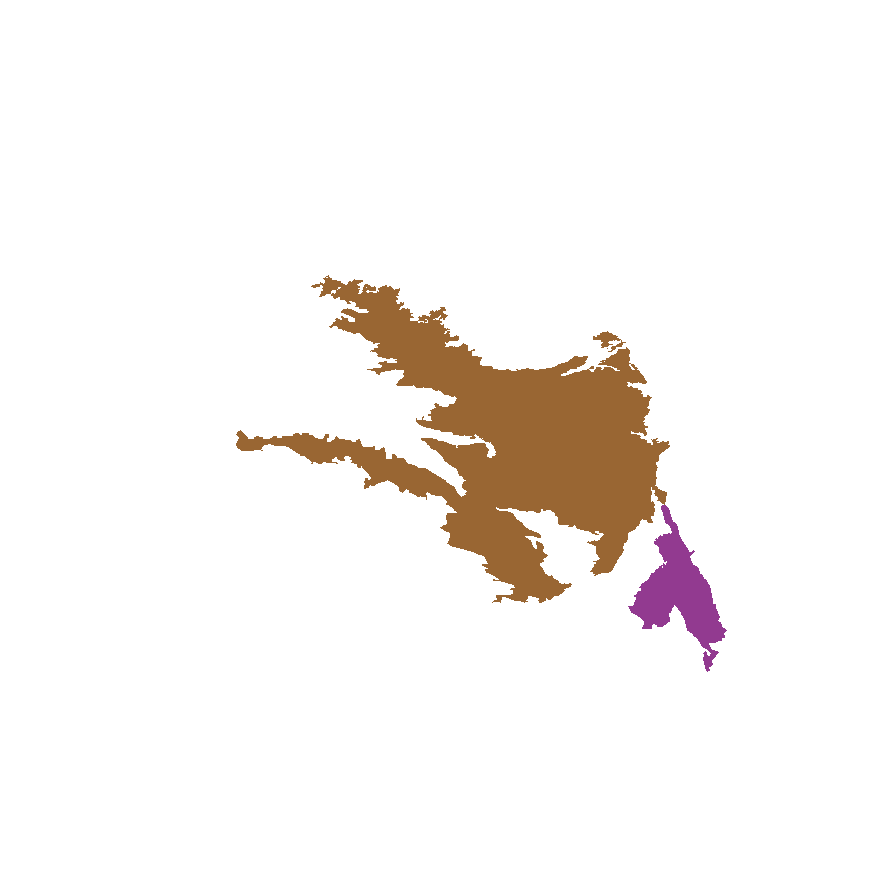
Botanical art
Prior names
Erysimum curvipes
Sisymbrium curvipes
Blennodia curvipes
Etymology
Scambopus from the Greek 'scambos' meaning bent or curved and 'pous' meaning foot; referring to the curved fruiting pedicels. Curvipes from the Latin 'curvus' meaning bent; referring to the curved fruiting pedicels.
Distribution and status
Endemic to South Australia and Found in the central part, growing in open mallee in swales and depression. Native. Uncommon in South Australia.
Herbarium regions: Gairdner-Torrens, Flinders Ranges, Eyre Peninsula
NRM regions: Eyre Peninsula, South Australian Arid Lands
AVH map: SA distribution map (external link)
Plant description
Annual herbs with many-stems to 50 cm tall, hairy with rough branched and stellate hairs. Basal leaves rosette, narrow-obovate, entire or dentate or pinnatisect, stem leaves reducing. Inflorescence a terminal cluster with yellow flowers. Flowers throughout the year especially in September. Fruits are brown, fusiform pod to 20 mm long and 2 mm wide, curved, quadrangular to slightly flattened parallel to the septum, valves hairy, with a prominent midvein, pedicels usually recurred. Seeds are brown reinform seed to 1.3 mm long and 1 mm wide, with a tuberculate surface. Seed embryo type is bent.
Seed collection and propagation
Collect seeds between September and November. Collect maturing pods those turning pale brown with brown seeds inside. Be gentle with the pods as they split open easily. Place the pods in a tray and cover with paper to prevent seeds from popping out and leave to dry for a week. Then rub the dried pods gently by hand to dislodge the seeds. Use a sieve to separate the unwanted material. Store the seeds with a desiccant such as dried silica beads or dry rice, in an air tight container in a cool and dry place. From one collection, the seed viability was high, at 100%.
| Location | No. of seeds (weight grams) | Number of plants | Date collected | Collection number Collection location | Date stored | % Viability | Storage temperature |
|---|---|---|---|---|---|---|---|
| BGA MSB | 1,600 (0.6 g) 1,600 (0.6 g) | 50+ | 17-Sep-2008 | PJA176 Eyre Peninsula | 20-Jul-2009 | 100% | -18°C |
| BGA | 9,500 (2.8 g) | 50 | 9-Sep-2009 | TST789 Eyre Peninsula | 1-Jan-2012 | 95% | -18°C |
| BGA | 13,000 (3.96 g) | 2-Sep-2016 | DJD3405 Gairdner-Torrens | 1-Nov-2017 | 85% | +5°C, -18°C, -80°C |
Number of plants: This is the number of plants from which the seeds were collected.
Collection location: The Herbarium of South Australia's region name.
% Viability: Percentage of filled healthy seeds determined by a cut test or x-ray.